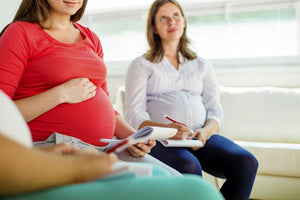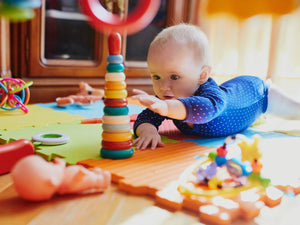Key Points
- Maternal placentophagy, once rare in Western society, has gained popularity recently, thanks partly to celebrity endorsements
- Consumption of the placenta post-birth is believed to aid in quicker recovery, reduce bleeding, replenish iron levels, boost milk supply, prevent postnatal depression, and increase energy
- Certified Placenta Specialists ensure safe processing, but personal hygiene is crucial. Side effects are minimal, but caution is advised with TCM capsules, especially if unwell, and excessive iron intake should be avoided
Maternal placentophagy (consumption of the placenta by a mother after birth) is common among most terrestrial maternal mammals yet until more recently, human placentophagy has been a rare occurrence in modern Western society. When I had my first child a little over five years ago, I was completely unaware of the benefits of consuming your placenta after birth and even three years ago when I had my second; the practice still wasn’t something that was particularly popular. Of course now, it’s far more common and widely accepted – thanks in part to a bunch of celebrities, and knowing what I know now, I sincerely regret not having had the opportunity to reap the potential benefits of consuming my placenta following the birth of both my children.
For some however, I understand the practice still raises many questions and concerns (and eyebrows!). In an effort therefore to help normalise the concept, I sat down with Sarah Croser, IPEN Certified Placenta Specialist to learn more about the benefits and the process. Here’s what I learned and here’s why you should at the very least consider eating your placenta…
The Benefits:
The benefits of consuming your placenta are many. It is said to encourage a quicker more natural recovery following the marathon that is birth, by replenishing the body with a rich supply of hormones, vitamins, minerals and nutrients. Sarah explains that consuming your placenta can:
- Significantly reduce post-birth bleeding
- Replenish depleted iron levels
- Increase milk supply
- Prevent the baby blues and postnatal depression
- Increase energy and decrease stress hormones
The placenta contains a rich supply of the following – extensive list – of hormones, vitamins, minerals and nutrients:
Stem Cells: the body’s master cells and can transform into almost any type of tissue – from brain cells to blood cells.
Rich Growth Factors: responsible for signalling our cells to heal, repair damaged cells or replace dead cells. Stem cells and Growth Factors in the placenta play a key role in healing the wound left inside the uterus after birth caused by the separation of the placenta from the uterine wall.
Iron: essential for oxygen absorption in the cells.
Vitamin B6: aids in the making of antibodies to help keep the immune system strong. It also promotes the production of red blood cells and helps the normal function of the brain.
Vitamins A, D, E and K: all essential and required for cellular metabolism, immune function and growth for healing damaged skin cells.
Oxytocin hormone: the ‘love hormone’, essential for facilitating birth and breastfeeding, bonding and love. Has also been shown to be a pain suppressant.
Progesterone and Oestrogens: support maternal endometrium (inner mucous membrane of the uterus).
Corticotropin-releasing hormone (CRH): responsible for reducing stress levels.
Cytokines: trigger cell metabolism healing and replacing damaged cells and tissue.
Gonadotrophin: the precursor to oestrogen, progesterone and testosterone.
Prolactin: hormone that promotes lactation and can therefore help increase milk supply.
Thyroid stimulating hormone: boosts energy and aids recovery from stressful events.
Cortisone: combats stress, fights depression and unlocks energy stores.
Interferon: stimulates the immune system to protect against infections.
Prostaglandins: hormones that have anti-inflammatory properties.
Haemoglobin: replenishes iron deficiency and anaemia, a common postpartum condition.
Urokinase inhibiting factor and factor XIII: stops bleeding and enhances wound healing.
Gammaglobulin: immune booster that helps protect against postpartum infections.
The Process:
There are many ways to benefit from your placenta. Placenta encapsulation (consuming your placenta in capsule form), and raw placenta smoothies are the most common, with placenta encapsulation perhaps being the least “confronting” if you’re having a tough time coping with the raw factor.
Placenta Encapsulation (Placenta Capsules)
There are two methods to create placenta capsules – Traditional Chinese Medicine (TCM) encapsulation and Raw placenta encapsulation.
In TCM, human placenta is known as Zi he che. It augments the qi (energy) and nourishes the blood and is widely used for debilitating chronic diseases. During the encapsulation process, the placenta is steamed with lemon, ginger and green chilli, dehydrated in a dehydrator for 8-10 hours, ground into a powder and then put into vegetable based capsules. Many believe that vital nutrients and hormones are depleted however, once the placenta has been steamed.
The Raw method simply skips the steaming process. The placenta is then dehydrated for 14-16 hours, ground into a powder and encapsulated. There are many debates on which method is superior. As an IPEN Specialist, Sarah recommends the Raw method to her clients but can also follow the TCM method if requested. Capsules should be consumed within 6-12 months and should be refrigerated to prevent bacteria growth. Like any other encapsulated powder, the placenta capsules reportedly have no taste.
Raw Placenta Smoothies
If you’re not frightened by the notion of consuming your placenta in raw form, Sarah explains smoothies are a great way to benefit from consuming the placenta as soon as possible. Raw placenta has a vast supply of stem cells and growth factors that play a key role in healing the wound left inside the uterus, following the separation of the placenta from the uterine wall. The smoothie is made of 3-4 pieces of fresh raw placenta, a handful of fresh organic berries, a banana and water. The smoothie needs to be consumed within an hour and contrary to what you may think, most women say they cannot taste the placenta once blended with the other ingredients.
Other Ways to Benefit From Your Placenta
You can benefit from your placenta in many other forms, including creams, tinctures, essences and homeopathic remedies. The Independent Placenta Encapsulation Network (IPEN) website has a very informative remedies and recipes page where you can learn more about some of these other methods.
Is it Safe?
Sarah says provided you are using a Certified Placenta Specialist the process is safe. Certified Specialists follow strict regulations and use hospital grade sterilising products to prevent cross-contamination. They also hold certificates in Hygiene for Food Handlers and Blood Born Pathogens Infection Control. Sarah emphasises it’s also important to exercise good personal hygiene such as washing your hands prior to handling the placenta capsules and even more so with raw placenta, should you choose to prepare you own smoothie for example. Personally I’d avoid DIY and enjoy the peace of mind knowing a trained expert is taking care of the intricate process for you but if you do choose to do it yourself, be sure to exercise caution.
Are There Side Effects?
Provided you follow the instructions given by your certified Specialist, including safe storage and handling of your capsules, and you do not exceed the recommended dose, the chances of experiencing side effects is minimal. IPEN notes, less than 2% of their clients have reported some side effects when taking their placenta capsules. Sarah has not had any reported side effects from her clients.
Sarah does explain that is not recommended to take placenta capsules that have been processed using the TCM method if you are unwell. TCM capsules are known as 'heat' or 'yang' energy in Chinese Medicine and therefore should be avoided if the body is experiencing excess heat from infection, such as; fevers as a result of mastitis. It is also not recommended to take iron supplements in conjunction with placenta capsules, as the placenta is a rich source of iron and there is potential to overdose on the mineral.
The Cost
Placenta Encapsulation Specialist fees range from $150-$400. To find a certified specialist in your area, visit the IPEN website.
Our Products
-

01. Guide to a Healthy Pregnancy
$55 -

02. Positive Birthing Course
$55 -

03. Infant Feeding Guide
$55 -

04. Baby Sleep Guide - First 12 Months
$55 -

05. Toddler Parenting Course 1 - 3 Years
$55
-
 When to Start Antenatal Classes?
When to Start Antenatal Classes?
Becoming a parent is an incredible milestone, but it comes with a host of changes that can be daunting, especially for first time parents. Antenatal classes are all about offering expectant parents the education they need to make informed decisions, look after their bodies and care for their newborn babies. While you probably already have a long list of things you need to accomplish during your pregnancy, it’s a good idea to make time to attend antenatal classes.
-
 Development Milestones 4-8 Months
Development Milestones 4-8 Months
As they reach the middle of their first year, you'll start to see bigger leaps in their growth and ability!
In this article, we’re going to discuss your baby’s developmental milestones between 4-8 months, and what you can expect along the way.





 When to Start Antenatal Classes?
When to Start Antenatal Classes?
 Development Milestones 4-8 Months
Development Milestones 4-8 Months








